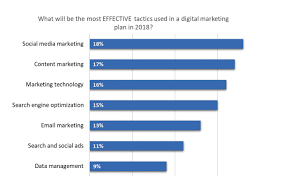The Key Elements of an Effective Digital Marketing Strategy
In today’s digital age, having a strong online presence is crucial for the success of any business. A well-crafted digital marketing strategy can help you reach your target audience, increase brand awareness, and drive conversions. Here are some key elements to consider when developing an effective digital marketing strategy:
Define Your Goals
Before diving into digital marketing tactics, it’s essential to clearly define your goals. Whether you aim to increase website traffic, generate leads, or boost sales, having specific and measurable objectives will guide your strategy and help you track your progress.
Know Your Audience
Understanding your target audience is fundamental to creating relevant and engaging content. Conduct market research to identify the demographics, interests, and online behaviour of your potential customers. This insight will enable you to tailor your messaging and delivery channels to resonate with your audience.
Utilise Multiple Channels
A successful digital marketing strategy often involves leveraging multiple channels to reach a wider audience. From social media and email marketing to search engine optimisation (SEO) and pay-per-click (PPC) advertising, diversifying your approach can maximise your reach and engagement levels.
Content is King
Compelling content lies at the core of any effective digital marketing strategy. Whether it’s blog posts, videos, infographics, or social media updates, creating high-quality and valuable content will attract and retain your audience’s attention. Remember to keep your messaging consistent with your brand voice and values.
Monitor and Analyse Performance
Regularly monitoring the performance of your digital marketing efforts is crucial for refining your strategy and achieving optimal results. Use analytics tools to track key metrics such as website traffic, conversion rates, click-through rates, and engagement levels. By analysing this data, you can identify what works well and what areas need improvement.
Adapt and Evolve
The digital landscape is constantly evolving, so it’s important to stay agile and adapt to changes in consumer behaviour and technology trends. Be open to experimenting with new strategies and tactics while continuously optimising your existing campaigns based on performance insights.
In conclusion, an effective digital marketing strategy requires careful planning, audience understanding, creative content creation, data-driven analysis, and a willingness to adapt to market dynamics. By implementing these key elements into your approach, you can enhance brand visibility, engage with customers effectively, and drive business growth in the competitive online marketplace.
Nine Benefits of an Effective Digital Marketing Strategy: Boosting Visibility, Engagement, and Growth
- Increased brand visibility online
- Targeted reach to specific audience segments
- Cost-effective compared to traditional marketing methods
- Ability to track and measure campaign performance in real-time
- Enhanced engagement with customers through interactive content
- Improved lead generation and conversion rates
- Opportunity for global reach and expansion of market presence
- Facilitates personalised communication with customers
- Adaptable to changing trends and consumer behaviour
Challenges in Crafting an Effective Digital Marketing Strategy: Resource Demands, Rapid Changes, Market Saturation, and Measurement Complexity
Increased brand visibility online
Increased brand visibility online is a significant advantage of implementing an effective digital marketing strategy. By strategically promoting your brand across various online channels such as social media, search engines, and websites, you can enhance your visibility to a wider audience. This heightened visibility not only increases brand recognition but also helps establish credibility and trust among potential customers. With a strong online presence, your brand can stand out in the crowded digital landscape and attract more attention, ultimately leading to greater brand awareness and potential business growth.
Targeted reach to specific audience segments
An important advantage of implementing an effective digital marketing strategy is the ability to achieve targeted reach to specific audience segments. By identifying and understanding different audience groups based on demographics, interests, and online behaviour, businesses can tailor their marketing messages and content to resonate with these specific segments. This targeted approach increases the likelihood of engaging with the right audience, driving higher conversion rates, and ultimately maximising the return on investment for digital marketing campaigns.
Cost-effective compared to traditional marketing methods
One significant advantage of implementing an effective digital marketing strategy is its cost-effectiveness when compared to traditional marketing methods. Digital channels offer businesses the opportunity to reach a large audience at a fraction of the cost associated with traditional advertising mediums such as print, television, or radio. With targeted online campaigns, businesses can allocate their budget more efficiently by reaching specific demographics and measuring the impact of their marketing efforts in real-time. This cost-effective approach allows businesses to maximise their return on investment and achieve measurable results while staying within their budget constraints.
Ability to track and measure campaign performance in real-time
An invaluable benefit of implementing an effective digital marketing strategy is the ability to track and measure campaign performance in real-time. By leveraging analytics tools and data metrics, businesses can gain immediate insights into the effectiveness of their marketing efforts. This real-time monitoring allows for quick adjustments and optimisations to maximise results, ensuring that resources are allocated efficiently and strategies are fine-tuned for optimal performance.
Enhanced engagement with customers through interactive content
Enhanced engagement with customers through interactive content is a key benefit of an effective digital marketing strategy. By creating interactive elements such as quizzes, polls, videos, and games, businesses can captivate their audience and encourage active participation. This not only increases customer interaction but also fosters a sense of connection and loyalty. Interactive content allows brands to personalise the user experience, gather valuable insights into customer preferences, and ultimately build stronger relationships with their target audience.
Improved lead generation and conversion rates
An effective digital marketing strategy can significantly enhance lead generation and conversion rates for businesses. By targeting the right audience with tailored content and engaging marketing campaigns across various online channels, companies can attract qualified leads and guide them through the conversion funnel more effectively. This proactive approach not only increases the quantity of leads but also improves the quality, resulting in higher conversion rates and ultimately boosting sales and revenue.
Opportunity for global reach and expansion of market presence
An effective digital marketing strategy offers businesses the opportunity for global reach and expansion of market presence. By leveraging online channels such as social media, search engines, and email marketing, companies can connect with audiences worldwide and increase brand visibility on a global scale. This enables businesses to tap into new markets, reach diverse demographics, and establish a strong international presence without the limitations of traditional geographical boundaries. With the right digital marketing approach, businesses can extend their market reach beyond local constraints and unlock growth opportunities in a borderless digital landscape.
Facilitates personalised communication with customers
An important advantage of an effective digital marketing strategy is its ability to facilitate personalised communication with customers. By leveraging data analytics and segmentation techniques, businesses can tailor their messages and offers to match the specific preferences and behaviours of individual customers. This personalised approach not only enhances customer engagement but also fosters stronger relationships, leading to increased brand loyalty and higher conversion rates. Through targeted communication, businesses can deliver relevant content that resonates with each customer, ultimately driving better results and long-term success in the competitive digital landscape.
Adaptable to changing trends and consumer behaviour
An important advantage of an effective digital marketing strategy is its adaptability to changing trends and consumer behaviour. By staying attuned to shifts in the digital landscape and evolving consumer preferences, businesses can adjust their marketing tactics swiftly to remain relevant and engaging. This flexibility allows companies to capitalise on emerging opportunities, connect with their target audience more effectively, and stay ahead of the competition in a dynamic online environment.
1. Resource Intensive
One notable drawback of an effective digital marketing strategy is its resource-intensive nature. The process of developing and executing a successful digital marketing plan demands a substantial investment of time, effort, and financial resources. From conducting market research and creating engaging content to managing multiple online channels and analysing performance metrics, the comprehensive nature of digital marketing initiatives can place a strain on a company’s resources. Businesses must carefully balance the costs associated with implementing such strategies against the potential benefits in terms of brand visibility and customer engagement.
2. Rapid Changes
One significant drawback of implementing an effective digital marketing strategy is the rapid pace of change within the digital landscape. The constant evolution of technology and emerging trends poses a challenge for businesses to stay up-to-date and adapt their strategies accordingly. This fast-paced environment requires continuous monitoring and adjustment to ensure that marketing efforts remain relevant and effective in reaching the target audience amidst ever-changing digital dynamics.
3. Saturation
In the realm of digital marketing, one significant drawback is the issue of saturation. The vast proliferation of online content and advertisements has created a highly competitive landscape where businesses struggle to differentiate themselves and capture the attention of their target audience amidst the overwhelming noise. Standing out in this crowded digital space requires innovative strategies and compelling content to cut through the clutter and make a lasting impact on consumers.
4. Measurement Complexity
One significant drawback of implementing an effective digital marketing strategy is the complexity associated with measuring its success. Tracking a multitude of metrics and data points to evaluate the performance of digital campaigns can be overwhelming for many businesses. The need to interpret and make sense of this data poses a challenge, requiring dedicated resources and expertise to ensure accurate analysis and decision-making. This measurement complexity can hinder some organisations from fully understanding the impact of their digital marketing efforts and optimising their strategies accordingly.


